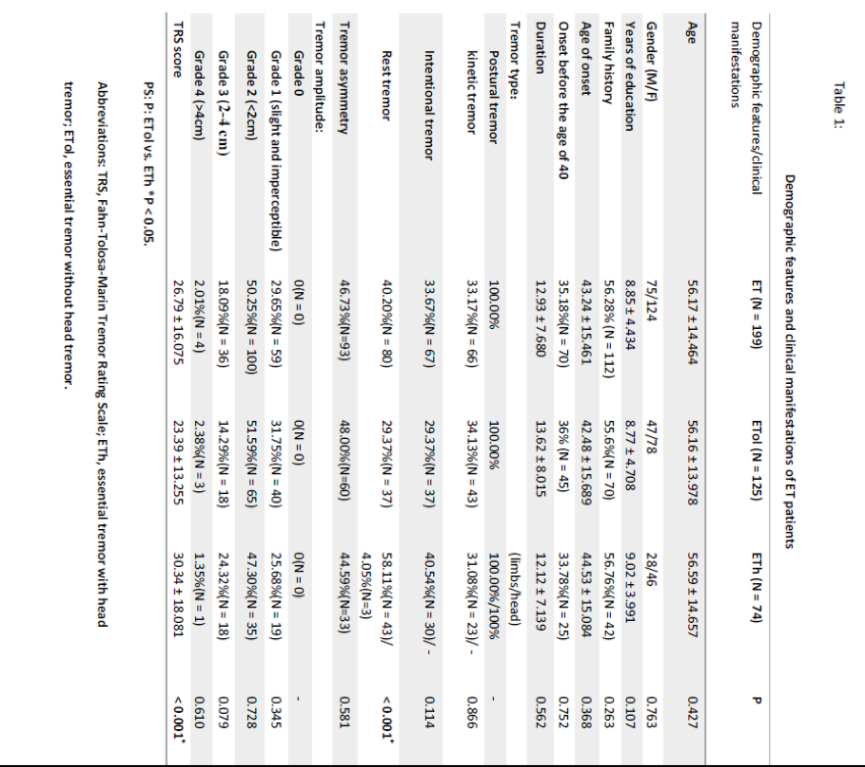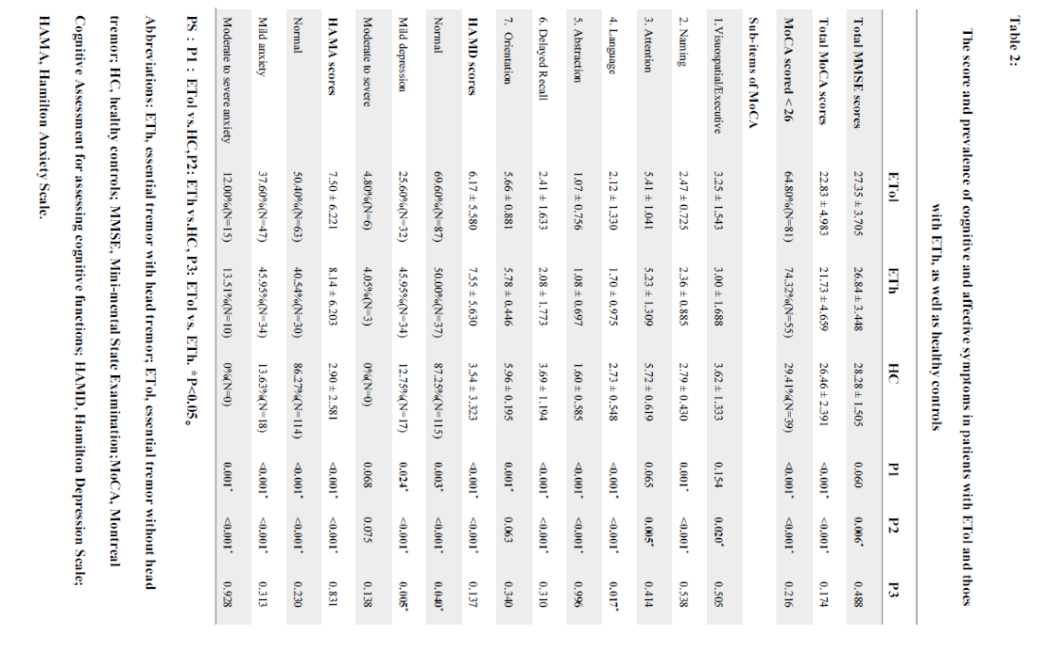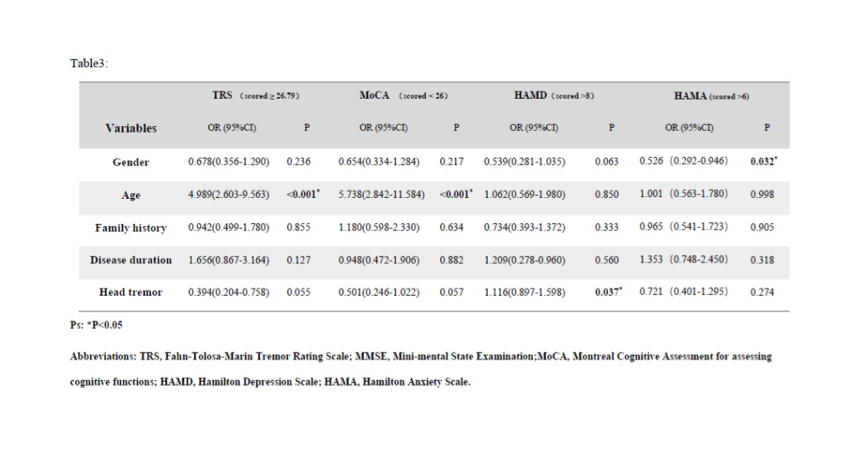Category: Tremor
Objective: We aimed to explore the motor and non-motor symptoms(NMS) especially cognitive and affective abnormalities of essential tremor (ET) with head tremor (ETh) and those without head tremor (ETol) patients.
Background: Numbers of studies [1] have indicated that ET is not only a benign movement disorder that only presents as tremor, it may also present with NMS and affect the patients’ quality of life. Besides upper limbs tremor, about 30%-60%[2]of patients with ET might present with head tremor as some defining it as an intricate subtype. It remains unknown whether head tremor might aggravate NMS in ET patients.
Method: We enrolled 199 patients with ET(125, ETol; 74 ETh) and 132 healthy controls. Neurologists collected demographic information and evaluated the tremor characteristics. Further, we evaluated motor symptoms using the Fahn-Tolosa-Marin Tremor Rating Scale (TRS) and using Mini-mental State Examination(MMSE), Montreal Cognitive Assessment(MoCA) for assessing cognitive functions, then Hamilton Anxiety Scale(HAMA) and Hamilton Depression Scale(HAMD) were used for affective evaluation. We compared the score of each rating scale and the prevalence to each degree of NMS between the subgroups of ET patients as well as healthy controls. we used ANOVA and the Chi-square for comparison. Finally, we conducted a binary logistic regression analysis of the correlation between head tremor and TRS scores, NMS rating scores and other determinants.
Results: There were no significant between-subgroup differences in demographic characteristics. Further, they presented similar tremor manifestation, while the ETh showed a higher prevalence of rest tremor(43/58.11%) (P<0.001), higher TRS scores(30.34 ± 18.081) (P < 0.001) compared with the ETol group. Both patient subgroups showed high scores in MoCA, HAMD and HAMA (P < 0.05). ETh group presented poorer language function and more prevalent mild depression(P < 0.05). Regression analysis indicated age (OR=4.989, P < 0.001) as a tremor severity determinant; further, head tremor (OR=1.116, P=0.037) as a depression symptom determinant.
Conclusion: Both patient subgroups presented slightly cognitive deficits, higer prevalence of affective disorders. The ETh subgroup showed distinct impairment within language function and a higher prevalence of mild depression. Head tremor may aggravated NMS, ET with head tremor may be regarded as a more severe clinical subtype.
References: [1]. E.D. Louis, When do essential tremor patients develop head tremor? Influences of age and duration and evidence of a biological clock, Neuroepidemiology. 2013;41:110–115. [2] E. D. Louis, Non-motor symptoms in essential tremor: A review of the current data and state of the field. Parkinsonism Relat. Disord. 2016;22 Suppl 1:S115–118.
To cite this abstract in AMA style:
J.X Peng, L. Wang, NN. Li, J.Y Li, L.R Duan, C.L Chen, R. Peng. Comparisons of motor and non-motor features between essential tremor with and without head tremor patiens [abstract]. Mov Disord. 2020; 35 (suppl 1). https://www.mdsabstracts.org/abstract/comparisons-of-motor-and-non-motor-features-between-essential-tremor-with-and-without-head-tremor-patiens/. Accessed December 23, 2025.« Back to MDS Virtual Congress 2020
MDS Abstracts - https://www.mdsabstracts.org/abstract/comparisons-of-motor-and-non-motor-features-between-essential-tremor-with-and-without-head-tremor-patiens/



